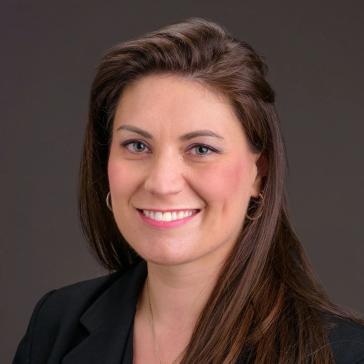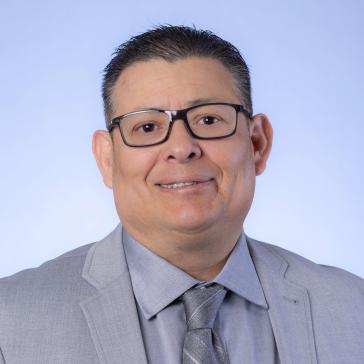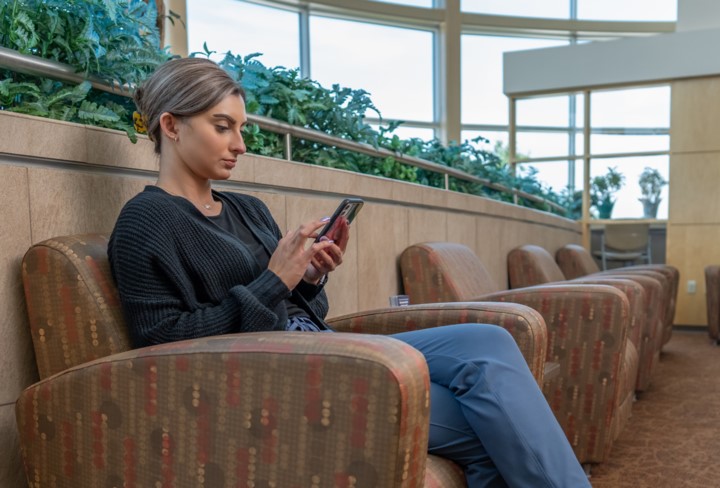CommonSpirit Orthopedics St. Mary-Corwin
Hours
About
As orthopedic specialists in the community of Pueblo and southern Colorado, our mission is to provide exceptional musculoskeletal care in a timely, professional and caring atmosphere. Our team of board certified surgeons specialize in the care of fractures, joint replacement, arthritis, sports injuries, the spine, shoulder surgery, hands, foot and ankle problems, and others.
Our Services
It is our goal to create an individualized treatment plan for each patient and get them back to having an active life. Our comprehensive care includes education, preparation, surgical care – if needed, post-operative care and rehabilitation.
Sports Medicine
We provide state-of-the-art care for a full spectrum of sports injuries. We have additional subspecialty fellowship training in the area of Sports Medicine. We specialize in results-oriented programs to improve athletic performance and to "get you back in the game" whether you're a competitive or recreational athlete.
Our doctors have worked with many professional and collegiate organizations over the years that have included FIFA, NCAA, Pro Bull Riding (PBR), Major League Soccer (MLS), the Chicago Sky (WNBA), the University of Illinois at Chicago Flames, University of Colorado Buffaloes, Denver Pioneers, and the Colorado State University at Pueblo-Thunderwolves. They also provide coverage for many high school sports in the Southern Colorado Region.
We provide advanced surgical techniques in the following areas:
- Arthroscopic Procedures
- Shoulder
- Knee
- Hip
- Elbow
- Ankle
Specialized Procedures
- All arthroscopic rotator cuff repairs
- Arthroscopic and open surgical treatment for shoulder dislocations
- Reconstruction for shoulder separations
- Non-joint replacement treatment of arthritis
- Knee Ligament reconstruction including procedures to restore function after ACL tears, multiple ligament tears including knee dislocation
- Reconstructive procedures for unstable patellafemoral joints (i.e. dislocating kneecaps)
- Cartilage repair techniques such as meniscus repair and microfracture
- Cartilage restoration procedures such as Carticel™, DeNovo™ or Osteoarticular allografts
- Hip preservation procedures including hip arthroscopy, labral repair, treatment of hip impingement
- Surgical treatment of ankle instability
Rehab Treatment and Techniques
Our team provides state-of-the-art care for a full spectrum of sports injuries. We specialize in results-oriented programs to improve athletic performance and "get you back in the game" whether you're a competitive or recreational athlete. We provide care for active individuals of all ages.
- Specialized Training in Preventative Techniques
- Musculoskeletal Problems
- Specialized Back and Neck Treatments
Total Joint Replacement
We perform replacements on hips, knees and shoulders. Most of our total joint replacement patients have a diminished quality of life when performing simple everyday tasks.
How do I know if I need a joint replacement?
Patients with joint pain, usually undergo a number of tests on their joint, which may include:
- Physical exam
- Laboratory tests
- MRI
- CAT Scan
- X-rays
Our physicians will review your test results and meet with you to discuss your options for a treatment plan. Generally, total joint replacement surgery is the last resort for patients who have already tried physical therapy, pain management and other orthopedic remedies.
St. Mary-Corwin’s Joint Replacement Center
St. Mary-Corwin Physician Partners Orthopedics performs our joint replacement surgeries at St. Mary-Corwin’s Joint Replacement Center in Pueblo. The St. Mary-Corwin Joint Replacement Center's unique program is designed to encourage the best results leading to a discharge from the hospital three days after surgery.
Providers






Patient Resources
Preparing for Joint Replacement Surgery
Four Weeks Before Surgery
Start Iron, Vitamins
Prior to your surgery, you may be instructed by your surgeon to take multivitamins as well as iron. Iron helps build your blood, which is especially important if you plan to pre-donate your own blood. Constipation and upset stomach are common complaints that patients have when they are taking an iron supplement. Taking iron with food and drinking plenty of water can help reduce side effects.
Anesthesia
Total Joint Replacement surgery usually requires the use of general anesthesia. If you have questions, please contact our office.
Importance of Your Coach
The people that you find in your daily life, friends and family, are obviously important to you. In the process of a joint replacement, the involvement of a family friend or relative acting as your coach is very important. Your coach will be with you from the pre-op process through your stay in the hospital and to your discharge to home. They will attend pre-op class, give support during exercise classes, and keep you focused on healing. They will assure you continue exercising when you return home and see that home remains safe during your recovery.
Joint Outcomes Program
To assure continued excellence in the St. Mary-Corwin Total Joint Replacement program, we will utilize survey information from the time of discharge to perhaps a year later. You may be asked to participate in these surveys- answer honestly - it is your opportunity to tell the St. Mary-Corwin Joint Replacement Center what you feel went well and what might have room for improvement.
Ten Days Before Surgery
Pre-operative Visit to Surgeon
You should have an appointment in our office 7-10 days before surgery.
Two Days Before Surgery
Shower Prep Prior to Surgery
You will need to shower with a special soap once a day for two days before surgery. You will receive the soap from our office. If surgery is on Monday, take a shower with the special soap on Saturday and Sunday.
Directions:
- Pour the special soap on a washcloth.
- Wash all areas of your body, except face and peri-anal area, with the special soap.
- Thoroughly wash the area where you are going to have surgery.
- Rinse as usual. Dress as usual.
We recommend this special soap to reduce the amount of germs on your skin prior to surgery.
The Day Before Surgery
Find Out Your Arrival Time at Hospital
You will be asked to come to St. Mary-Corwin two hours before the surgery to give the nursing staff sufficient time to start IV's, prep, and answer questions. It is important that you arrive on time to the hospital as occasionally the surgical time is moved up at the last minute and your surgery could start earlier. If you are late, it may create a significant problem with starting your surgery on time. In some cases, lateness could result in moving your surgery to a much later time.
Night Before Surgery
Do Not Eat or Drink. Do not eat or drink anything after midnight, EVEN WATER, unless otherwise instructed to do so.
Day of Surgery
What to Expect
- Patients are prepared for surgery including starting an IV and scrubbing your operative site. Your operating room nurse as well as your anesthesiologist may interview you. They may escort you to the operating room where you will see your surgeon or anesthesiologist.
- Following surgery, you will be taken to a recovery area where you will remain for one to two hours. During this time, pain control is typically established, your vital signs monitored, and an x-ray may be taken of your new joint. Depending on the type of anesthesia used, you may experience blurred vision, a dry mouth, and chills. The team will work to make you as comfortable as possible.
- You will then be taken to the St. Mary-Corwin Joint Replacement Center where an orthopedic nurse will care for you. Only one or two very close family members or friends should visit you on this day. Most of the discomfort occurs within the first 48 hours following surgery. During this time, you will be receiving pain medication through your IV (PCA). You most likely will remain in bed the first day. It is very important that you begin ankle pumps on this first day. This will help prevent blood clots from forming in your legs. On the day of surgery, you will be getting out of bed, assisted by nursing or physical therapy. You should also begin using your Incentive Spirometer and doing the deep breathing exercises that you learned in class. Each day you will receive a daily newsletter outlining the day's activities.
Please call our office with any questions.
Caring for Your Cast
Understanding the basics of cast and splint care can promote a faster and uneventful recovery. Casts and splints support and protect injured bones and soft tissue. They can also help reduce pain, swelling, and muscle spasm.
Types of Splints and Casts
Casts are custom-made to fit and support an injured arm or leg.
- Fiberglass Casts: Fiberglass casts are typically lighter and more durable than traditional plaster casts. Also, X-rays penetrate fiberglass casts better than plaster casts. This may be helpful if your doctor wants to use an X-ray to examine your bones while you are still wearing the cast. Fiberglass casts are available in different colors
- Plaster Casts: Plaster casts are easier to mold for some uses which can be important in specific injuries. Plaster casts are typically less expensive. They are only available in white.
Splints or half-casts can be either a custom fit or "off-the shelf".
- Many times a splint of "half-cast" is necessary in a fresh injury to accommodate for swelling. A cast may be applied later once the swelling is reduced. Your doctor will decide which is best for you.
- Splints can be made of fiberglass, plaster or other materials.
- "Off-the-shelf" splints come in a variety of shapes and sizes, and are much easier and faster to use. They may have Velcro straps which make the splints easy to put on, take off, and adjust. They may allow for bathing of the extremity.
What can be done to reduce swelling?
To decrease pain and help your injury heal faster it is important to keep the swelling down.
- Elevate. This is one of the best ways to decrease swelling after an injury. It is especially crucial during for first 24 to 72 hours. Prop your injured arm or leg up above your heart by putting it on pillows or some other support. Elevation allows the swelling and blood to drain "downhill" to your heart.
- Exercise. Move your uninjured, but swollen fingers or toes gently and often. This will also help prevent stiffness.
- Ice. Apply ice to the splint or cast. Place the ice in a dry plastic bag or ice pack and loosely wrap it around the splint or cast at the level of the injury. Ice that is packed in a rigid container and touches the cast at only one point will not be effective.
Warning Signs
If you experience any of the following symptoms, contact your doctor's office immediately for advice.
- Increased pain/tightness not relieved with elevation. This may be caused by too much swelling.
- Numbness and tingling in your hand or foot. This may be caused by too much pressure on the nerves.
- Burning and stinging. This may be caused by too much pressure on the skin.
- Excessive swelling below the cast. This may mean the cast is slowing your blood circulation.
Taking Care of Your Splint or Cast
- Keep your splint or cast dry. Moisture weakens plaster and damp padding next to the skin can cause irritation. Use a waterproof covering to keep your splint or cast dry while you bathe.
- Avoid dirt. Keep dirt, sand, and powder away from the inside of your splint or cast.
- Itching. Applying a hair dryer on a cool setting under the cast may help. Do not stick objects such as coat hangers inside the splint /cast to scratch itching skin. This can cause injury and infection. Do not apply powders to itching skin. If itching persists, ask your doctor about an over- the-counter antihistamine.
- Skin. Inspect the skin around the cast. If your skin becomes red or raw around the cast, contact your doctor.
- Cast fit. After a while the cast may not fit well. Inspect the cast regularly. If it becomes cracked, develops soft spots, or is too loose, contact our office.



